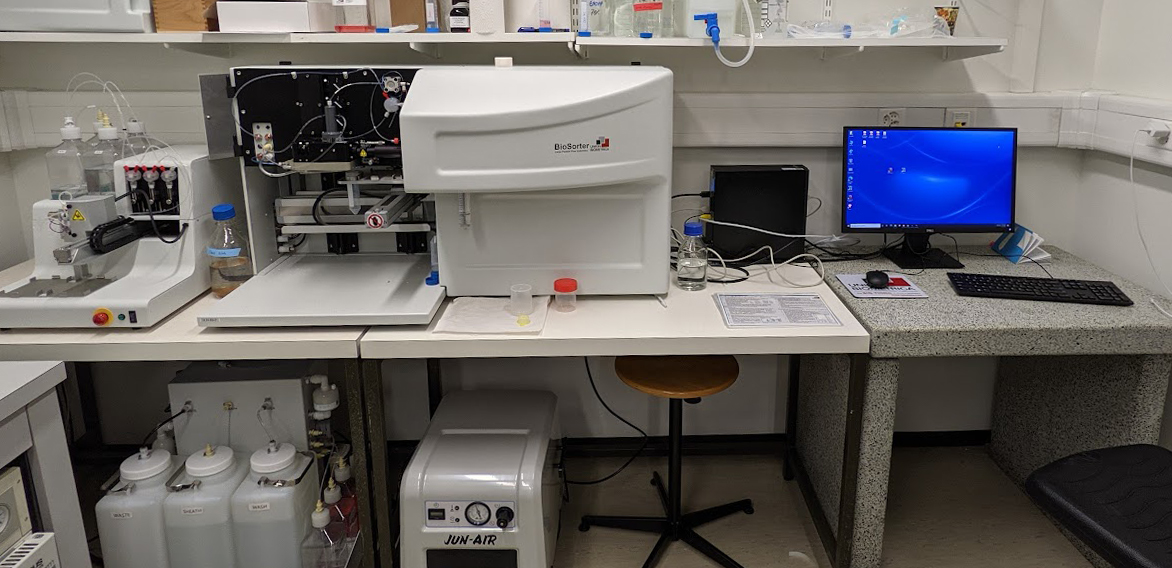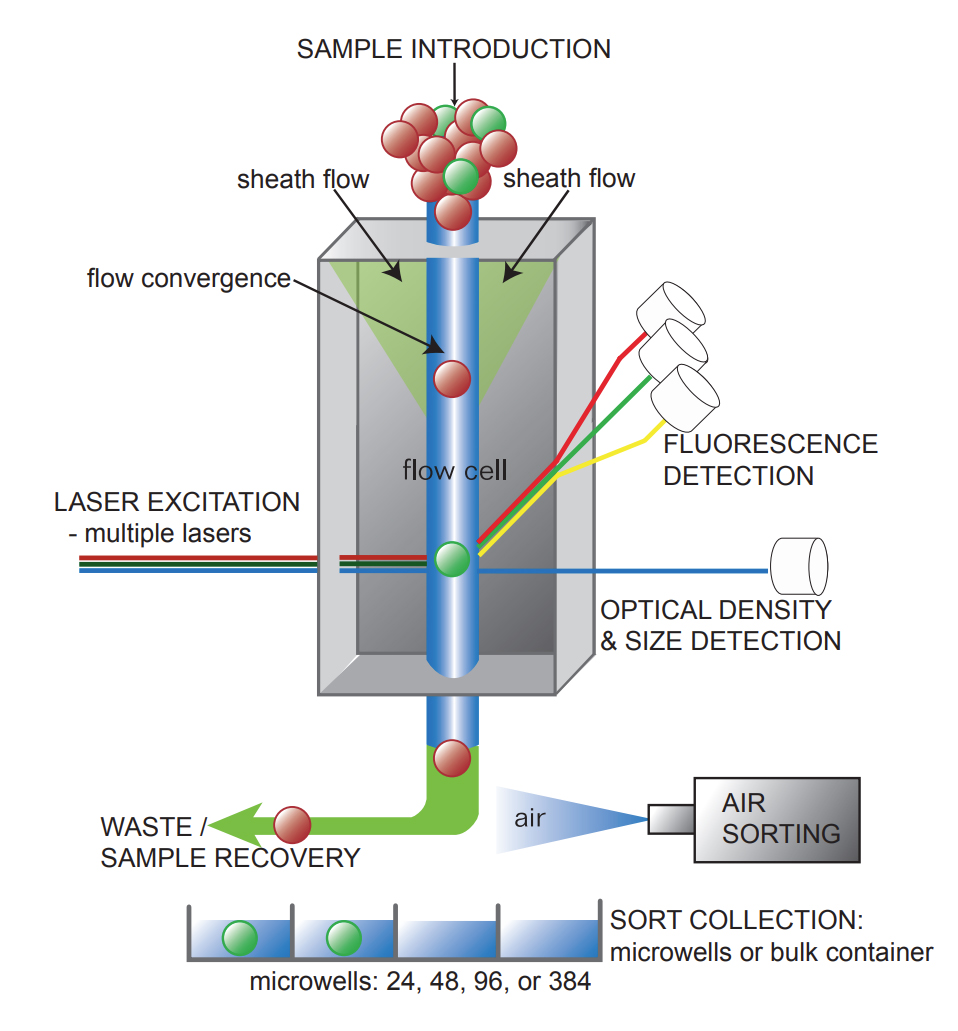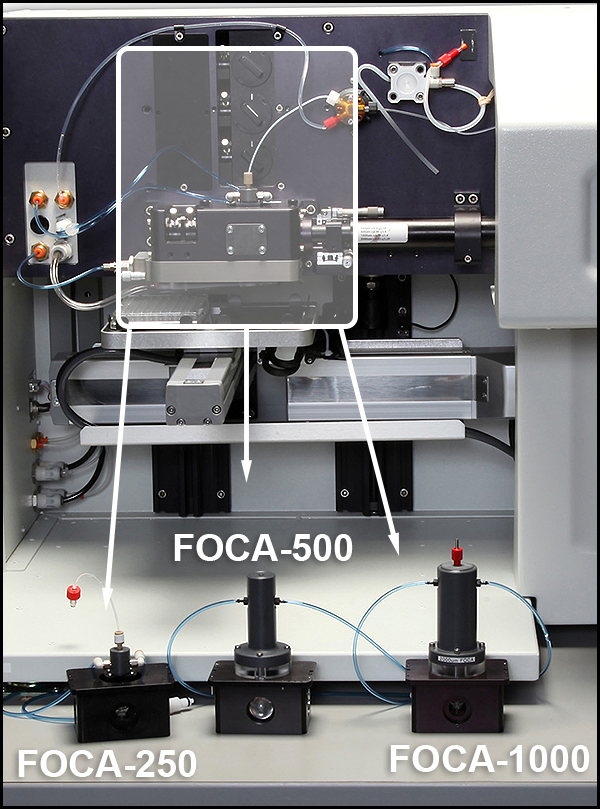|
|

|
|
|
|
|
Facility News
Welcome to August best known as "Slow Flow Month". Yep, most of you are enjoying a well deserved break and the FCF Team is using this opportunity to clean, organize and put the cytometers in the best shape of their lives before the rush of September. We are also always available for any support so feel free to ask us !
|
Now that we discussed a lot about fundamental flow cytometry, we thought it would be interesting to start highlighting our different equipments, their specificity and how that can be of use to your project. To kick it off, the FACS Tips of the month will be all about our Biosorter. Contrary to traditional sorters (Arias, Astrios) which are able to efficiently isolate particles with size ranging from 0,5-1 um (Extracellular Vesicles, E. Coli) to 60-70 um (skin cells, large tumour cells, adipocytes), the Biosorter sees bigger and can help you isolate large cells (cardiomyocytes) cell clusters (pancreatic islets, spheroids and organoids) and even small organisms like C. elegans with sizes ranging from 20 to 1500 microns ! So check the details below !
|
Finally, I would like to remind everyone that the past FCF Newsletters are always available on the website at this location.
|
|
|
|
FACS Tips
|
Biosorter
Traditional sorters have been an invaluable tool to isolate rare cell populations, perform single cell sorting for cloning and more recently enrich for smalller particles like extracellular vesicles. Yet, as tumour biology, immunology and regenerative medecine are bringing efforts into studying complex in vitro 3D models, there is still a lack of solution to manipulate spheroids and organoids in a efficient manner. It is of critical importance to be able to select them based on size, morphology or targeted markers expression to conduct significant studies. Attempting to bridge that gap, Union Biometrica has introduced the Biosorter, a large particle sorter capable of sorting these and more large particles that could not be done efficiently before.
|
The Biosorter is able to deal with objects ranging from 20 to 1500 microns. The sample can be provided from a 50 ml conical tubes or alternatively from a plate thanks to the LP sampler module. It can sort samples to plates (from 6 to 384 wells) or tubes (1,5 to 15 ml). It is equiped with a 488 nm and a 561 nm laser. it can sort based on the axial length of the object (similar to FSC), its optical density/complexity (similar to SSC) and up to 3 fluorescences (filter sets availables : GFP, YFP, RFP, mCherry and equivalent fluorochromes.
|
|
The Biosorter operates at a lower pressure compared to conventional sorters and use gentle air stream diverter to sort events of interest. This is a viable alternative to manual isolation of large object such as cell clusters, seeds or small organisms.
|
|

|
It is located at the UNIL Biophore site. The machine was acquired in early 2021 and users can access it since April 2021.
|
Basic Principles
|

|
Adapted from Union Biometrica
|
Although the Biosorter system is based on traditional flow cytometry sorting principles (see above), it adapts some key aspects to be optimized for the handling of large particles.
|
In traditional flow cytometry, as the machine is installed, the stream of particles going through the flow cell has to be aligned with the path of the lasers to be able to gather the multiple parameters needed for the sort. This alignment and setup is performed by a trained technician and it could take hours. That is usually perform only during annual maintenance.
|
|
The initial limitation of large particle flow cytometry was the diversity of size the Biosorter would have to dealt with. Indeed, it would require different flow cell size to handle it. It would then be unrealistic to have a technician perform the adjustement between two sorts. Consequently, Union Biometrica found a way to produced a fixed assembly of the flow cell and pre align optics : The Fluidics and Optics Core Assemblies (FOCA) (see below).
|
|

|
That structure can easily be changed based on sample requirement even by casual users of the machine. Few cables have to be unplugged and the FOCA can be put in place and working in approximately 15 min. We have a FOCA-500 (40-300 um) and FOCA-1000 (200-700 um) available to our users.
|
The Biosorter operates at a very low pressure (1,5-2,5 PSI for FOCA-500, 0,2-0,3 PSI for FOCA-1000). As a consequence of the low pressure applied to the sample it limits the potential disruptive shear forces inherent to traditional sorting and should help encouraging viability.
|
Lastly, the sorting itself is done using a pneumatic mechanism located downstream of the flow cell. The sample is being pushed to the waste constantly and when an event or interest is detected, the air flow stops to let the particles drop in the collection device. There is no mechanical sorting or electrostatic charge involved.
|
|
These differences ensures that the Biosorter can perform high speed analysis and gentle sorting of large objects.
|
|
Examples of Applications
From the time of its instalment in the facility, we have already been able to try a diverse set of samples on this machine including :
|
- Seeds, Arabidopsis (Arabidopsis thaliana): RFP and/or GFP sorts on CRISP/Cas edited seeds. (Geldner Lab & Santiago Lab)
- Tumour pieces embed in alginate beads: Sort based on GFP signal of few tumour cells positive in order to keep the tumoral environment.(Brisken Lab)
- C. Elegans: WT or mCherry expressing worms (Ocampo Lab)
|

|
How to use the sorter ?
You can book a sort with us as you would for any other sorters. If you are planning on using the machine on a regular basis, it is possible to be trained to use it on your own for a cheaper price.
|
|
if you are interested in using the machine, please contact us to discuss the details !
|
|
|
|
|
|
|